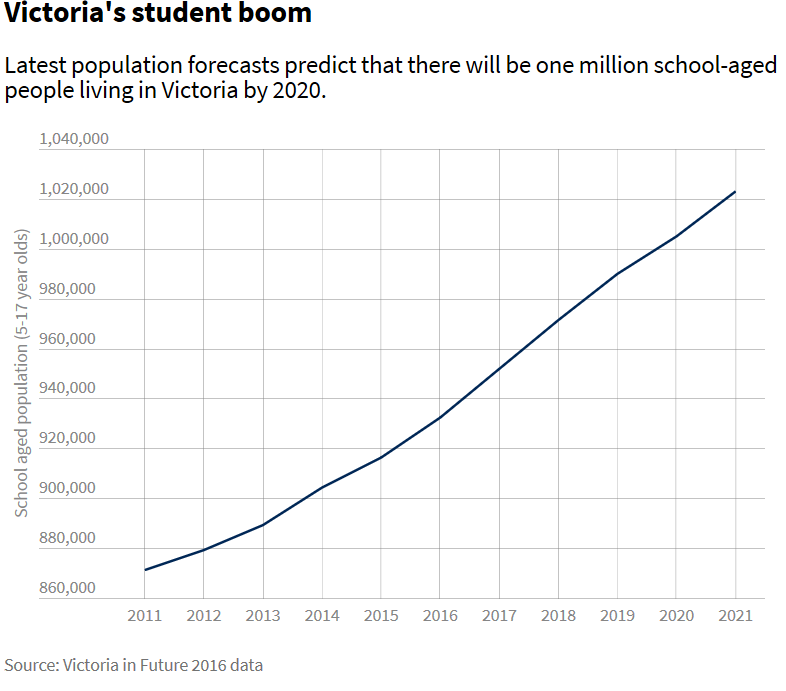The lack of planning and foresight to cope with the never-ending population (immigration) influx into Australia’s big cities never ceases to amaze. Over the past year or so, we have received numerous reports about overcrowding across schools in Sydney, Melbourne and Brisbane, let alone other collateral damage like worsening traffic congestion, crush-loaded public transport, and deteriorating housing affordability.
The story is always the same: the explosion in the number of high-rise apartments and fringe houses across our major capitals is dramatically driving up student enrolments, resulting in “jam-packed” public schools.
Yesterday, we got yet another taste of this dysfunctional population ponzi in action, with The Age reporting that new schools planned for Melbourne are already over-subscribed before they even open:
It hasn’t opened yet but the new South Melbourne Primary is already sending out rejection letters.
Demand for the inner-city school is intense, with 105 students enrolled in its inaugural prep class.
The Ferrars Street school, which will open next year, has space for 525 students.
But if this scramble for places continues, Victoria’s first vertical state school will soon be over its capacity by more than 200 students.
Other state schools opening next year face a similar fate.
The situation speaks of the huge demand in the inner-city and sprawling growth corridors.
The number of Victorian school-aged children will increase by almost 90,000 over the next five years, with schools having to find room for 1 million students by 2020.
Existing schools in the area are incredibly overcrowded.
The nearby Port Melbourne Primary was built for 300 students but now has almost 820.
South Melbourne Primary has hardly made a dent on Port Melbourne’s prep enrolments, which will drop by 20 students to 115 next year.
But the government insists it can keep up with the demand.
Education Minister James Merlino said a pipeline of 56 new state schools would accommodate 70,000 new enrolments in the government school sector.
“We know our state is growing faster than any other, and the inner city is no different,” Mr Merlino said.
Next year, the government will open 11 new state schools…
A “pipeline of 56 new state schools”, hey? That will barely touch the sides. According to Peter Goss, School Education Program Director at the Grattan Institute, Victoria will require 220 new schools in the decade to 2026 merely to keep pace with projected student enrolments:
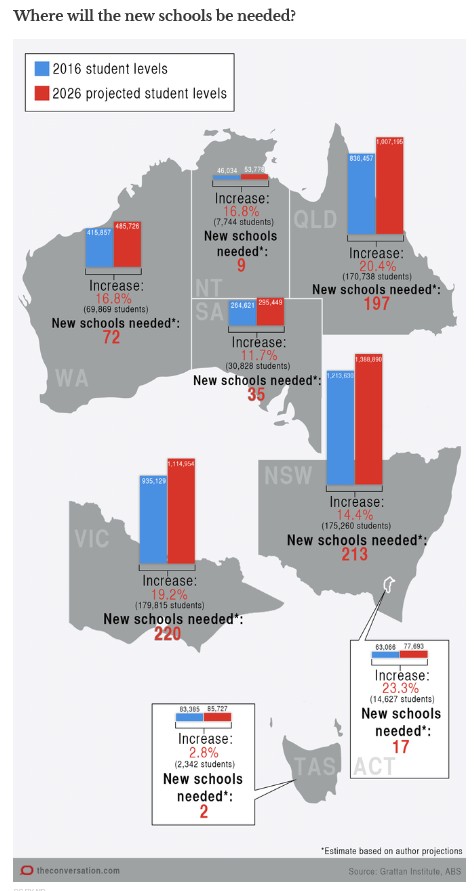
The situation is worst in Melbourne’s inner-city:
In the inner city, the big issue is the cost and scarcity of land… Governments have been much worse at planning for the booming number of inner-city children…
Worse is to come, especially in Melbourne. Melbourne’s five most central local government areas will each see a 30% to 60% increase in student numbers over the next decade… Inner-city parents in urban redevelopment zones are the most likely to have problems getting their children into a government school.
To rub further salt into the wounds, the Turnbull Government recently relaxed visa rules to allow 6 year-old foreign students and their guardians visa entry into Australia’s primary schools, thus adding to the demand pressures.
As we all know, the primary driver of this mess is the federal government’s mass immigration program.
Over the past decade, Sydney’s population grew by around 800,000 people (equivalent to 2 Canberra’s), Melbourne’s grew by around 1 million (2.5 Canberra’s), and Brisbane’s by around 450,000 (just over 1 Canberra).
Official population projections also have Sydney’s population growing by 1,650 people per week (87,000 people per year) over the next 20 years – representing total population growth of 1.74 million people, which is the equivalent of 4.5 Canberra’s:
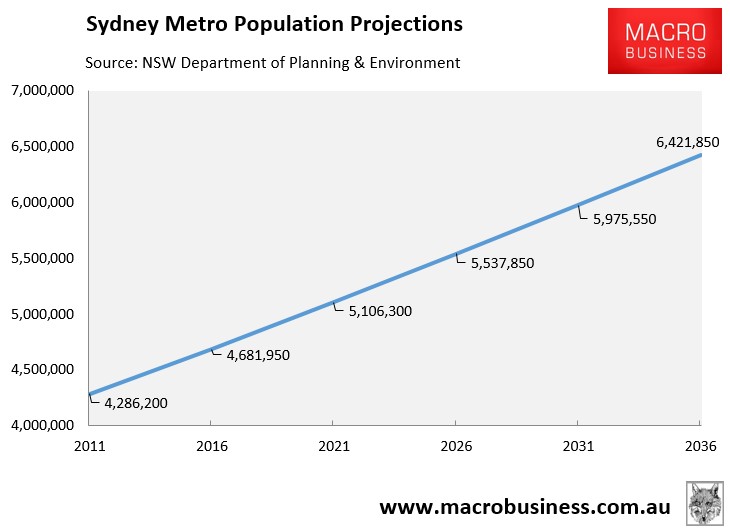
Melbourne’s population is projected to grow by 1,870 people per week (97,000 people a year) over the next 35 years – adding an additional 3.4 million people or the equivalent of 9 Canberra’s or 2.5 Adelaide’s:
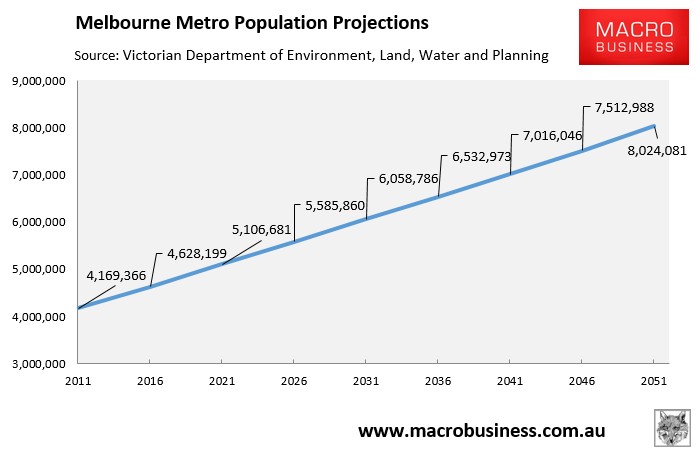
Whereas Brisbane’s population is projected to grow by 950 people per week (49,300 people per year) over the next 20 years – representing total population growth of just under 1 million people, which is the equivalent of 2.5 Canberra’s:
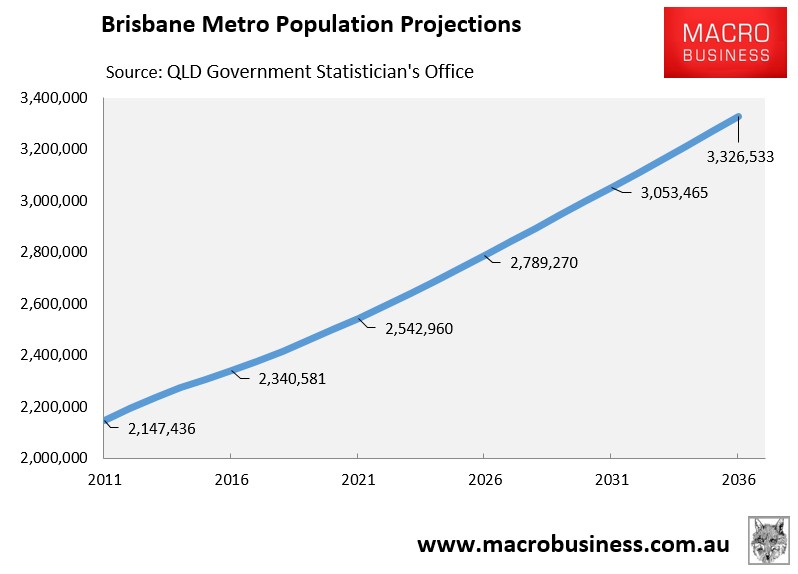
Running a mass immigration program without adequate planning and investment means incumbent residents will spend more time lost in traffic, spend more on (smaller) housing, receive less public services (e.g. health and education), and experience overall lower living standards.
The equation is that simple, but largely ignored by our negligent politicians, policy makers and mainstream media.
unconventionaleconomist@hotmail.com

